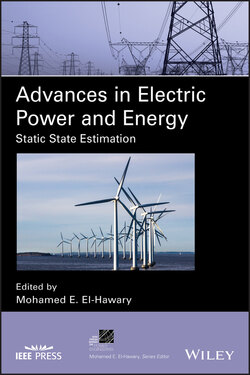Читать книгу Advances in Electric Power and Energy - Группа авторов - Страница 30
1.5.3 Locational Marginal Pricing
ОглавлениеThe equal incremental cost (system lambda) rule arises in conventional economic dispatch of a system of fossil fuel thermal generating units serving an active power load (demand) neglecting transmission losses. This case uses one active power balance equation (APBE) to model the electric network physical constraints. Accounting for transmission losses in the APBE leads to the well‐known loss penalty factors that are used to penalize the incremental cost of generation for each unit. Loss penalty factors whose values are greater than one correspond to units whose losses increase with the load demand and are further away from the load center. In optimal PF, the electric network is modeled using the PF equations and results in two lambdas (one for the active power equation and the second for the reactive equation) for each node in the system. This is the basis of LMP.
LMP reflects the wholesale value of electric energy at different pricing nodes (locations) considering the operating characteristics, physical constraints, and losses caused by the physical constraints and limits of the transmission system and patterns of load generation. Pricing nodes include individual points on the transmission system, load zones (i.e. aggregations of pricing nodes), external nodes, and nodes where the independent system operator interconnects with a neighboring region and the Hub. The Hub is a collection of locations that represent an uncongested price for electric energy, facilitate electric energy trading, and enhance transparency and liquidity in the marketplace [29–32].
Different locations in the system have different LMPs since transmission and reserved constraints prevent the next least expensive megawatt (MW) of electric energy from reaching all locations of the grid. Even during periods when the least expensive megawatt can reach all locations, the marginal cost of physical losses will result in different LMPs at different locations.
Typically, the LMPs are calculated every five minutes. The LMP at a load zone is used to:
1 Establish the price for electric energy purchases and sales at specific locations throughout the wholesale electricity market for compensating generators and charging loads.
2 Collect transmission congestion charges.
3 Determine compensation for holders of financial transmission rights.
It is common practice to evaluate the LMP at a load zone as the weighted average of all the nodes within that load zone.
In practice, an LMP consists of three components:
1 Energy component of all LMPs that is the price for electric energy at the “reference point,” which is the load‐weighted average of the system node prices.
2 Congestion component related to the marginal cost of congestion at a given node or external node relative to the load‐weighted average of the system node prices. In a manner like that of the load zone LMP, the congestion component of a zonal price is the weighted average of the congestion components of the nodal prices that comprise the zonal price. Moreover, the congestion component of the Hub price is the average of the congestion components of the nodes belonging to the Hub.
3 Loss component at a given node or external node reflects the cost of losses at that location relative to the load‐weighted average of the system node prices. The loss component of a zonal price is the weighted average of the loss components of the nodal prices that constitute the zonal price. The loss component of the Hub price is the average of the loss components of the nodes that belong to the Hub.
